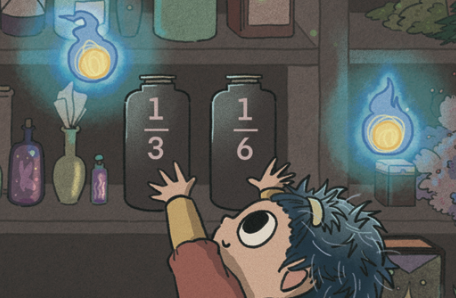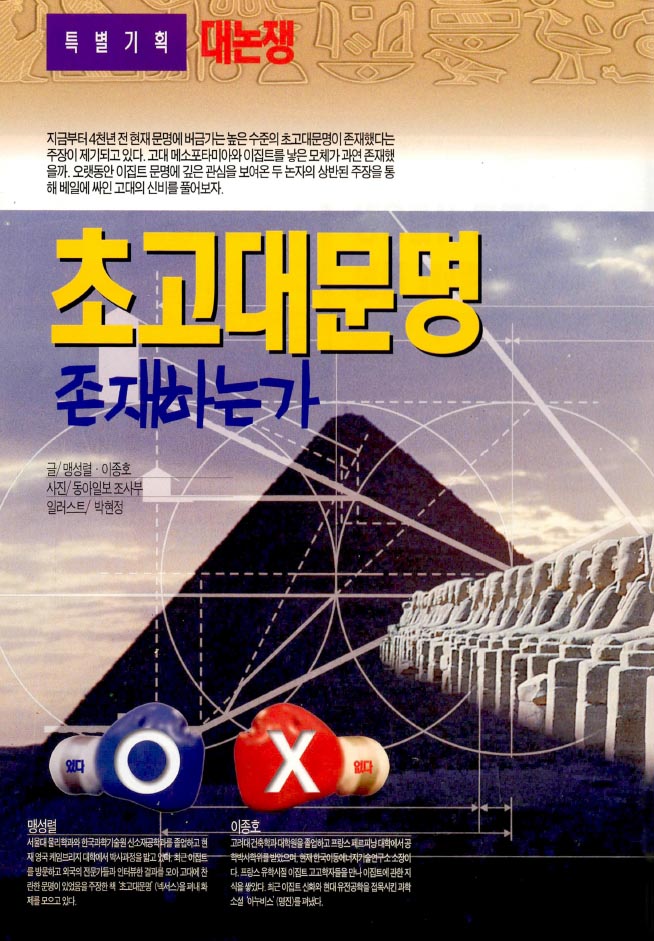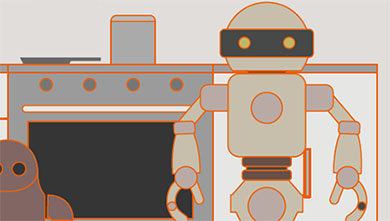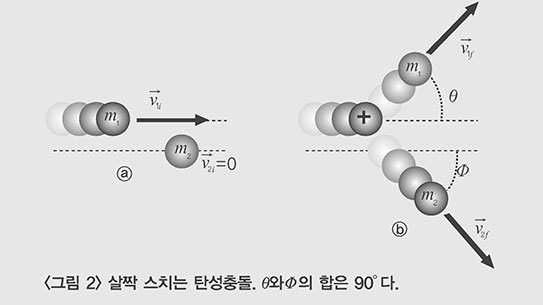오래전인 1962년에 지구 주위 궤도에 커다란 천체 망원경을 설치할 것이 제안되었는데 1989년인 오늘날에 이르러서야 마침내 그것이 실현될 듯하다. 천체를 탐사하게 될 94인치의 반사경을 가진 이 망원경은 60년전 우주 팽창을 증명한 '에듸윈 허블'을 기리기 위하여 '허블 우주 망원경'이라 명명될 것이다.
지구상에 2백인치 또는 그 이상의 크기의 반사경을 가진 망원경을 가지고 있음에도 불구하고 위의 계획이 중요한 이유는 무엇인가? 별들이 1조 마일 또는 1조 마일의 수십억배에 해당하는 거리만큼 떨어져 있음을 생각해볼 때 인간이 별에 약 5백 마일 정도 더 가까이 다가가게 된 것은 커다란 의미를 지니지 못한 것처럼 보일 수도 있다.
그러나 중요한 사실은 허블 우주 망원경이 지구대기권 밖에 설치될 것이라는 점이다. 그 망원경은 공기층 바깥에서 우주를 보는 눈이 되어줄 것이다.
지구의 대기는 태양이나 항성들로 부터 오는 복사의 상당량을 흡수하기 때문에 이들로 부터 오는 광선이 지구표면까지 도달하지 못한다. 대기권을 통과하여 들어온 복사라 할지라도 낮에는 공기층에 의해 푸른색 이외의 빛은 산란되어 희미해지며 밤에는 안개와 구름에 의해 관측이 어렵다. 맑은 밤에 조차도 공기층의 온도변화로 인하여 광선이 앞뒤로 약간씩 구부러지게 되어 별들이 일그러지고 흐리게 보이게 된다. 허블 우주 망원경은 위와 같은 간섭들을 전혀 받지 않기 때문에 보다깨끗하고 명확한 관측을 할 수 있도록 해줄 것이다.
따라서 우주공간에 위치한 이 망원경은 지구상에 있는 어떤 망원경으로도 관측할 수 없었던 것을 관측할 수 있게 해 줄 것이며 지구상에서 관측이 가능했던 것들에 대해서는 보다 선명한 관측을 가능하게 할 것이다.
오늘날 천문학에 있어서 가장 흥미로운 발전중의 하나는 천문학자들이 최신의 기기들을 사용하여 최소한 1백70억 광년 이상의 거리에 있는 은하계들을 발견해내고 있다는 것이다. 허블 우주 망원경은 이렇게 먼 거리에 있는 은하계를 보다 선명하게 관측할 수 있게 해주며 보다 많은 은하계를 발견할 수 있게 하여줄 것으로 기대된다.
이러한 관측이 중요한 이유는 무엇인가? 그것은 1백70억년에 걸쳐서 지구에 도달한 빛을 관측함으로써 1백70억 광년 떨어져 있는 은하를 관측할 수 있기 때문인데 이로 인하여 그처럼 오래 전에 형성된 우주의 초기 모습을 있는 그대로 볼 수 있으며 은하가 형성되는 방법에 대해서도 알 수가 있다. 이것은 천문학자들이 진정으로 알기를 원하는 것으로 다른 방법으로는 도저히 알아볼 수가 없다.
일반적으로 우주 공간에서 관측을 하면 은하를 보다 자세히 연구할 수 있으며 이들의 스펙트럼 사진도 더욱 선명하게 나타난다. 스펙트럼에 나타난 선들의 위치로부터 우주가 얼마만한 빠르기로 팽창하고 있는지에 대하여 보다 확실한 결론을 내릴 수가 있으며 우주가 대 폭발을 시작한 시기와 언제까지 팽창을 계속할는지도 알 수 있다. 또 과연 우주가 언젠가는 팽창을 멈추고 수축을 시작하여 수십억년 뒤에는 하나의 커다란 덩어리로 뭉치게 될는지의 여부도 알 수 있다.
허블 우주 망원경을 통하여 은하의 중심을 보다 정확하게 연구할 수 있으며 은하의 중심을 둘러싸는 구상성단들을 보다 효율적으로 관측할 수 있을 것이다. 그리고 수백만 또는 수억개에 달하는 별들이 빽빽하게 밀집해 있는 은하계의 중심에서 블랙홀의 존재가능성에 대해서도 더 많이 알게된다.
또한 별들사이에 존재하는 성운(가스구름)과 몇몇 뜨거운 별들을 둘러싸고 있는 가스막을 연구하여 그들의 화학적 조성을 보다 많이 알게 될 것이다. 이로인해 우리는 별들의 생성·발전에 관하여 알 수 있게 될 것이다.(우리 자신의 별, 태양을 포함해)
허블 우주 망원경을 이용하여 별들의 위치를 보다 정확하게 알게 되고 보다 큰 정밀도로 항성의 주위를 도는 행성의 존재와 이들의 인력을 나타낼는지도 모르는 느린 변화를 발견할 수도 있을 것이다. 지금까지 우리는 다른 항성의 주위를 도는 행성에 대하여 명확한 증거를 얻지 못하고 있었는데 대기권 밖에 이 관측기구를 통하여 그러한 증거를 얻게 될는지도 모른다.
허블 우주 망원경은 항성들 보다도 훨씬 가까이에 위치한 것들, 즉 태양계내에 있는 행성들에 대하여도 유용한 정보를 줄 것으로 기대된다. 이제까지는 탐사로킷을 이용하여 목성 토성 천왕성 등 외행성을 망원경을 통한 관측보다 명료하고 자세하게 관측하여 왔으며 곧 해왕성도 관측할 예정이다. 그러나 아직은 탐사로킷이 명왕성까지 수년내에 도달하지 못한 것으로 보인다. 그러므로 허블 우주 망원경을 통하여 명왕성과 그것의 위성인 샤론을 이전보다 훨씬 선명하게 관찰하여 그것들에 대한 새로운 정보를 얻을 수 있을 것이다.
허블 우주 망원경으로는 지구상에 있는 망원경으로 볼 수 있는 것보다 더 먼 거리에 있는 헤성을 관측할 수 있을 것이다. 이러한 관측을 통하여 우리는 일단의 사람들이 주기적으로 지구상의 많은 생명체들을 소멸시키는 유성우의 요인일 것이라고 생각하는 태양계 외부의 거대한 혜성운에 대하여 새로운 정보를 얻게 될 것이다.
그러나 무엇보다도 흥미로운 것은 예고되지 않고 기대하지도 않았던 가능성에 대한 것이다. 우주공간을 탐사하기 위한 새 기구들은 우주에 관한 생생한 경이로움을 안겨주어 왔었는데 허블 우주 망원경 역시 그러한 경이를 만들어낼 것임을 확신할 수 있다. 그러한 경이가 과연 무엇일는지는 기다려서 발견해야만 할 것이다.
As long ago as 1962 it was suggested that we put a large telescope into orbit about the Earth, and now, finally in 1989, it looks as though that will be done at last. A telescope with a 94-inch mirror will be scanning the sky. It will be the "Hubble space telescope", named in honor of Edwin Hubble, the astronomer who 60years ago demonstrated that the universe is expanding.
What's the point? After all, we have large telescopes, some with mirrors of 200 inches and more, on Earth's surface. Getting one up about 500 miles closer to the stars wouldn't seem to mean much when the stars are trillions, even billions of trillions, of miles away.
The important fact, however, is that the Hubble space telescope will be above the Earth's atmosphere. It will be an eye beyond the air.
Our atmosphere absorbs a large part of the radiation that comes from the sun and the stars, and so their light does not penetrate to the surface. Sometimes even the radiation that does get through is obscured because the air scatters sunlight into blue sky that hides everything else during the day, and there are often mists and clouds during the night. Even on a clear night, temperature changes in the air cause light rays to bend slightly back and forth, causing the stars to twinkle, and blurring what we see. None of that will interfere with the Hubble space telescope. It will see everything rock-steady and point-sharp.
What it amounts to, then, is that the telescope in space will see things no telescoe can see from Earth's surface. As for those things we can see from Earth's surface, the Hubble space telescope will see them far more clearly.
Right now, one of the most exciting developments in astronomy is that astronomers, making use of the latest instruments, are detecting very distant galaxies that are at least 17 billion light-years away. The Hubble space telescope will be able to see these very distant galaxies much more clearly, and it will probably see many more of them.
Why is that important? Because we see galaxies that are 17 billion light-years away by light that took 17 billion years to reach us. We see these galaxies as they were in the early youth of the universe. They can tell us about the manner in which galaxies formed all that long time ago. That is something that astronomers would dearly love to know more about, and can find out in no other way.
Then, too, from space the galaxies generally can be studied more closely and their spectra photographed more sharply. We can come to better conclusions as to how rapidly the universe is expanding from the position of lines crossing those spectra, and that will tell us just when the universe came into being in the Big Bang, and for how long it is likely to continue to be expanding-and whether it might someday cease expanding altogether and begin contracting, until billions of years it collapses into a Big Crunch.
We can study the centers of galaxies more sharply and peer more efficiently into the globular clusters that circle those centers. We will learn more about the possible existence of black holes at the centers of such densely packed masses of hundreds of thousands, or even hundreds of millions, of stars.
We can study the gas clouds between stars, and gaseous envelopes that surround some hot stars, and get a better notion of their chemical composition. That will teach us more about how stars form and develop (including our own star, the sun).
The Hubble space telescope will be able to measure the position of a star more sharply, and can note, with greater precision, any slow wiggles in that position that might signify the presence and gravitational pull of a planet circling it. So far, we have not been able to get clear evidence of planets circling other stars, but the eye beyond the air may give it to us.
The Hubble space telescope may even give us useful information about objects that are much closer than the stars, objects that are in our own solar system. Our probes have shown us the outer planets-Jupiter, Saturn, Uranus, and, soon, Neptune-far more clearly and in far more detail than any telescope can show us. However, no probe has yet approached Pluto ; nor will one for many years to come. The Hubble space telescope will see Pluto and its moon, Charon, more clearly than they have ever been seen before, and that should give us new information about them.
The Hubble space telescope will see comets at greater distances than Earth-bound telescopes can. It may give us new information about the vast comet cloud on the outskirts of the solar system, which some people think may be the source of cosmic bombardments that periodically bring about the extinction of most life on Earth.
The most exciting thing of all, however, is the possibility of the unforeseen and the unexpected, Every new tool for exploring space has produced real surprises concerning the universe, and we can be sure the Hubble space telescope will do so, ,too. And what will those surprises be? We will have to wait and find out.
(c) 1989, Los Angeles Times Syndicate
이 기사의 내용이 궁금하신가요?
기사 전문을 보시려면500(500원)이 필요합니다.
1989년 04월 과학동아 정보
🎓️ 진로 추천
- 천문학
- 물리학
- 컴퓨터공학

















